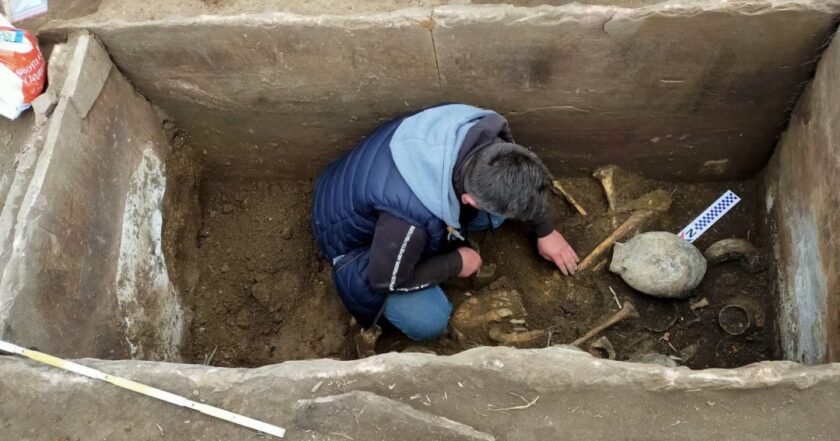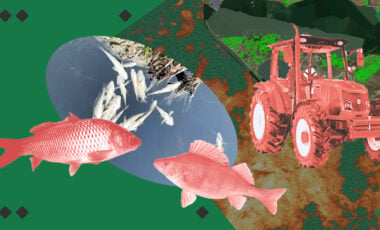5,000-year-old artifacts discovered in Ternopil region

Archaeologists have discovered ancient artifacts that are at least 5,000 years old in a stone tomb-sarcophagus excavated in a field.
The director of the Ternopil regional center of protection and scientific research of cultural heritage monuments, archeologist Maryna Yahodynska told about it, Ukrinform reports.
"The find is impressive, it's been preserved in a fairly good condition. The tomb is megalithic, that is, composed of stone blocks carved from local red stone. Moreover, even its bottom was also made of stone. As we previously assumed, the time of making such a stone burial chest is III millennium BC.
Inside we saw three human skeletons and vivid examples of the then-existing culture of spherical amphorae. These are 11 amphorae of various sizes, from miniature to 5-liter, clay pots, two well-sharpened flint axes, and a chisel," Yahodynska said.
According to her, the skeletons belong to adults. A bone buckle has been preserved on the belt of one of them, and a pendant made of animal fangs and a piercing (awl) have also been found.
Next to the skeletons lay the skull of an animal, whether a boar or a pig, a clear sign of a certain funeral ritual.
The archaeologist noted that in the Ternopil region at different times, such tombs were excavated on the outskirts of the villages of Luchka, Vorvulintsi, Ulashkivtsi.
At present, she added they began the stage of detailed research of artifacts.
Besides Ternopil archaeologists, anthropologists, specialists of the Department of Bioarchaeology of the Institute of Archeology of the National Academy of Sciences of Ukraine will study them.
They expect that the tomb and the found samples of the culture of spherical amphorae will be transferred to the fund of the National Reserve "Castles of Ternopil," where after certain technical and organizational measures, they'll be exhibited to visitors.
As previously reported, an ancient sarcophagus was accidentally discovered last week in the Ternopil region during spring fieldwork. In the field, a tractor hit and broke a boulder with a hole under it. They saw a human skull in it. When archaeologists arrived at the site, they found part of a stone tomb.
The culture of spherical amphorae (III millennium BC), which was buried in megalithic (composed of large blocks) tombs, is the most studied in western Ukraine. Representatives of this culture also inhabited both the Right Bank and partially the left bank of the Dnieper, and it spread to Moldova, Poland, and Northern Germany.
The culture got its name from the characteristic forms of dishes, spherical amphorae with small ears on the shoulders.
Artifacts made of ceramics, flint, bone, and amber indicate cultural materials. The stone chests were reusable family crypts.


















































